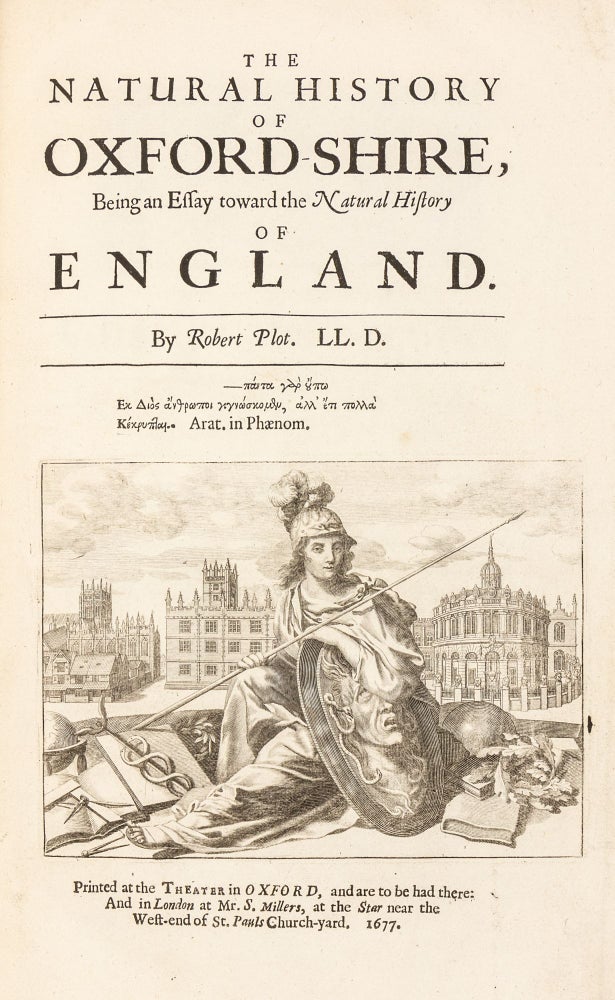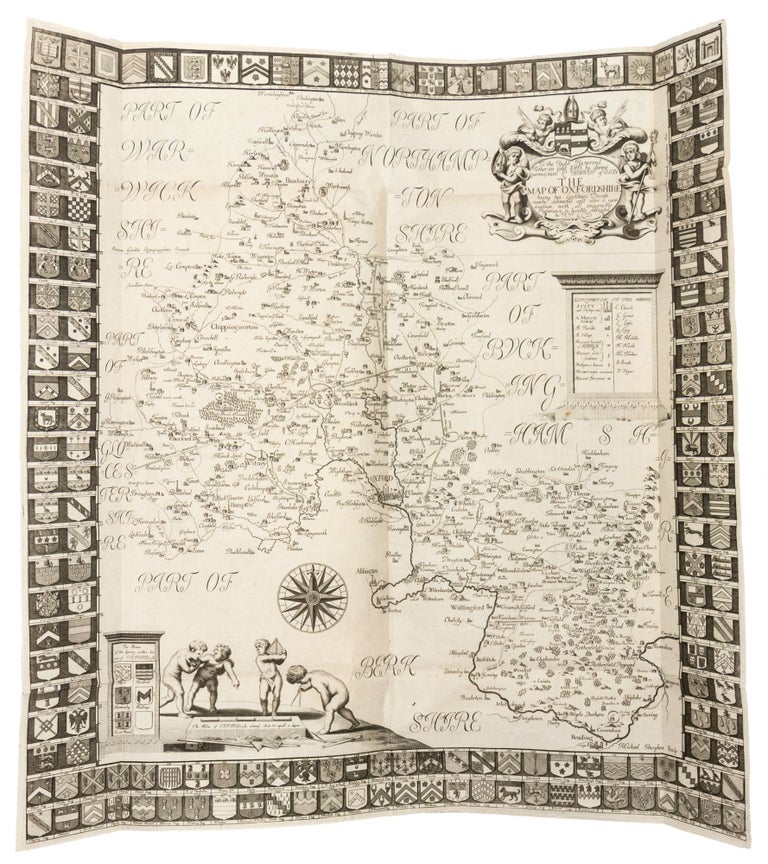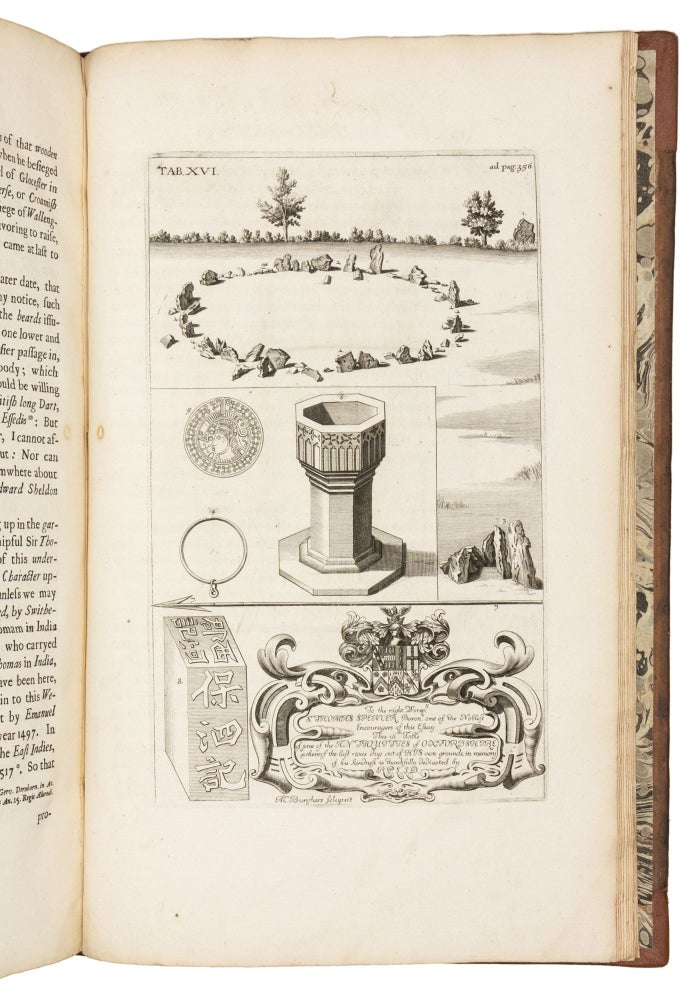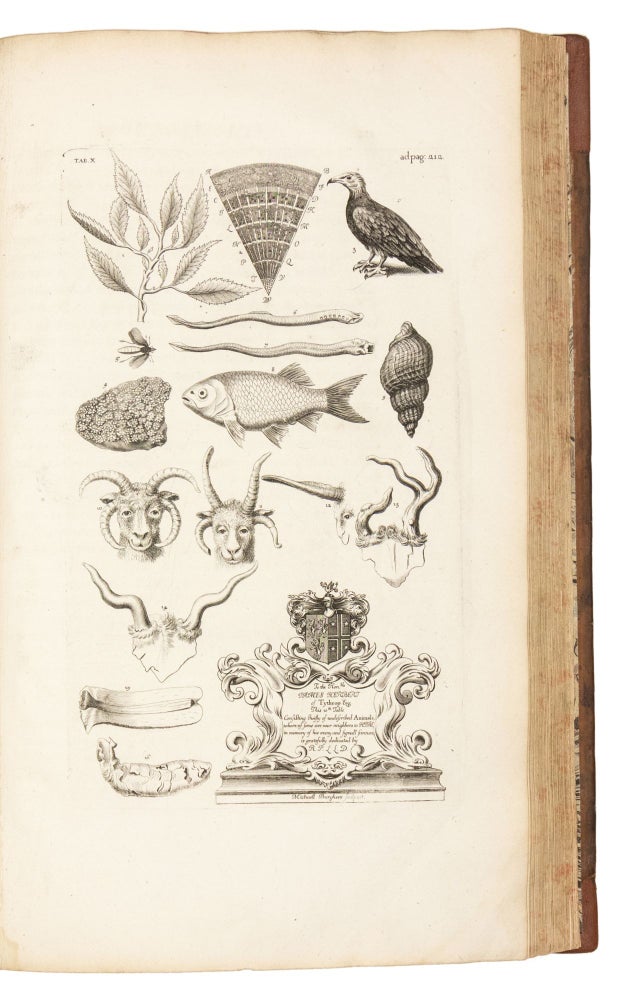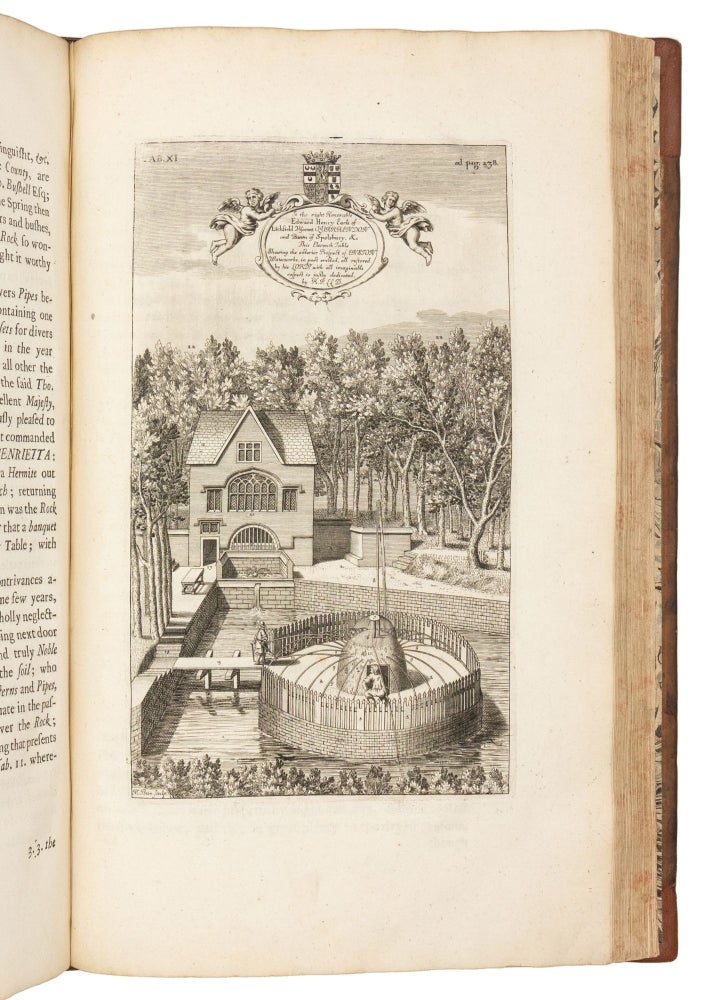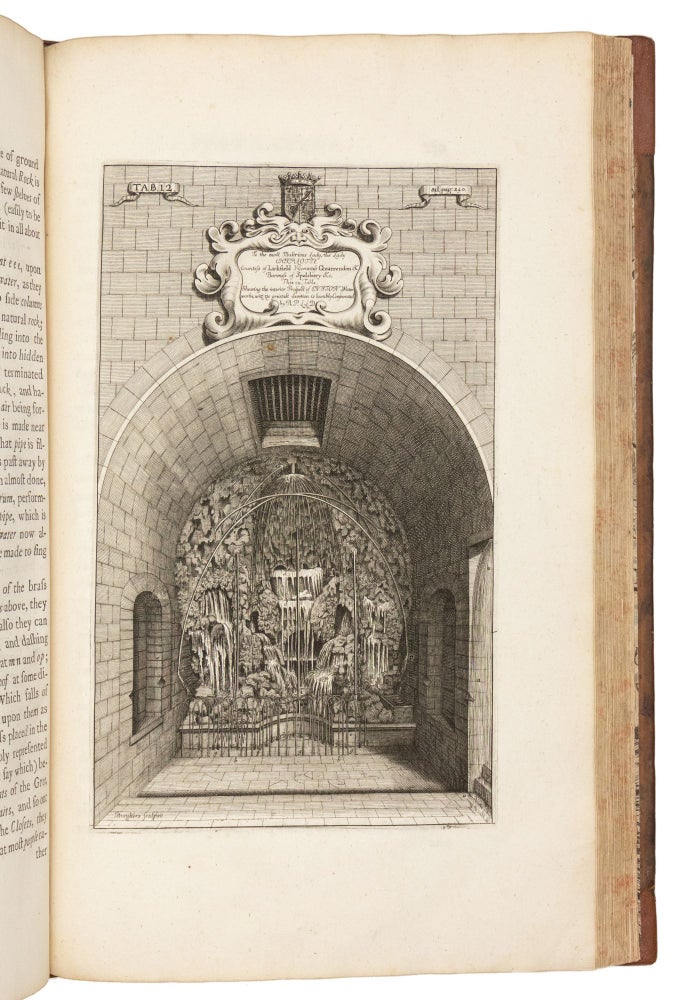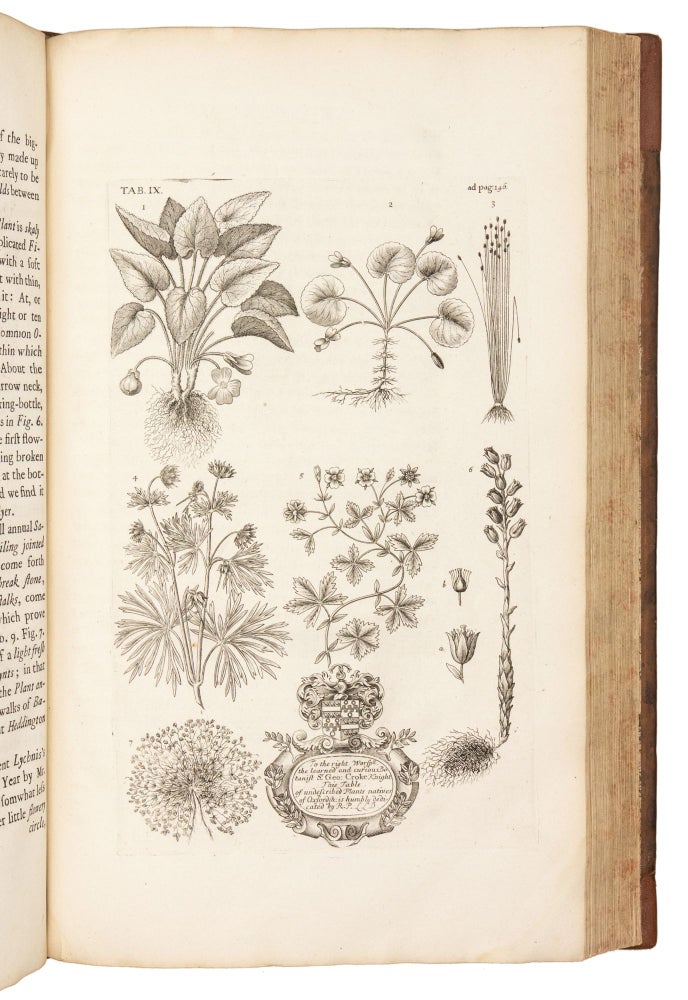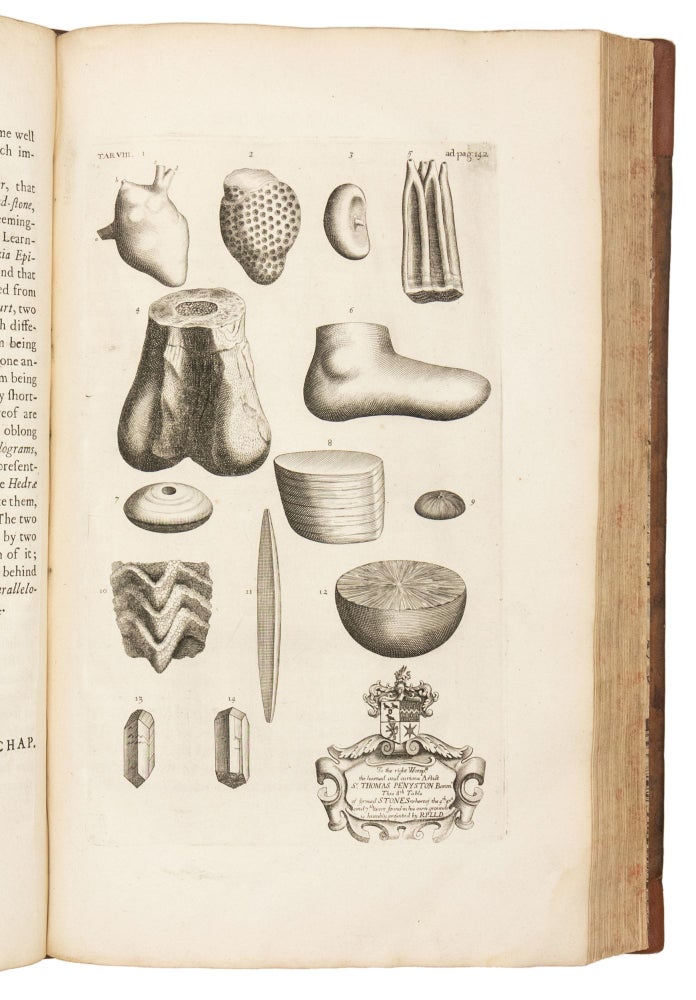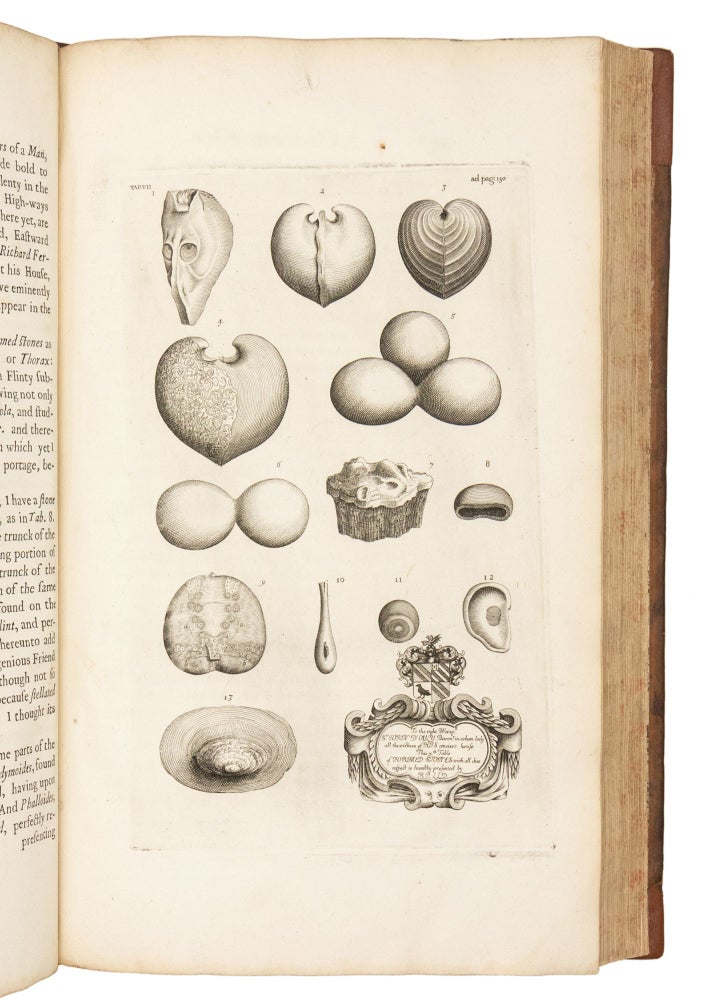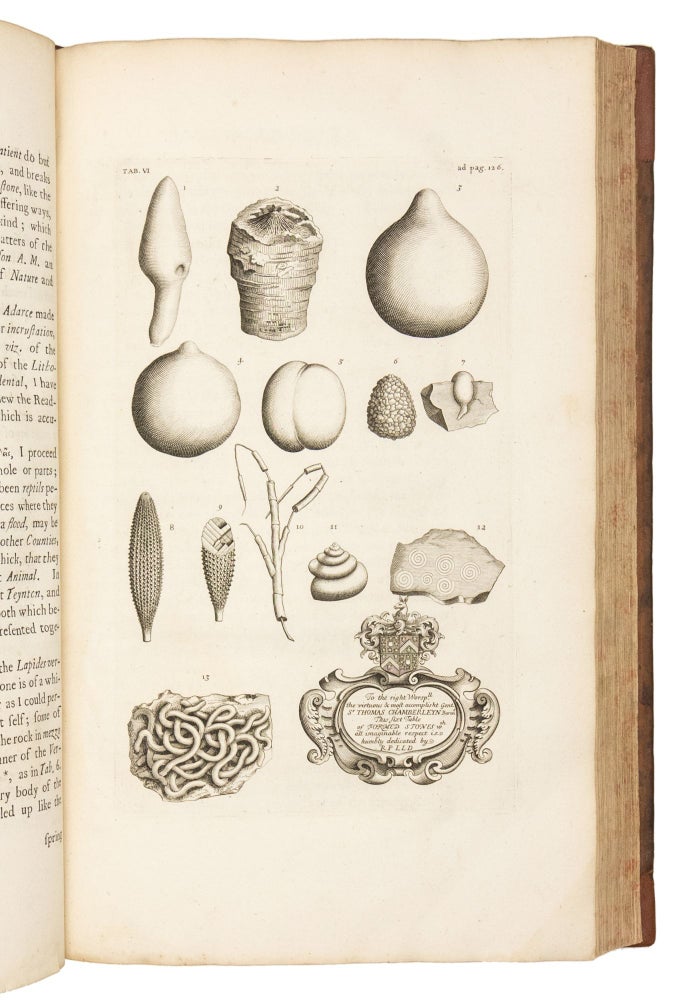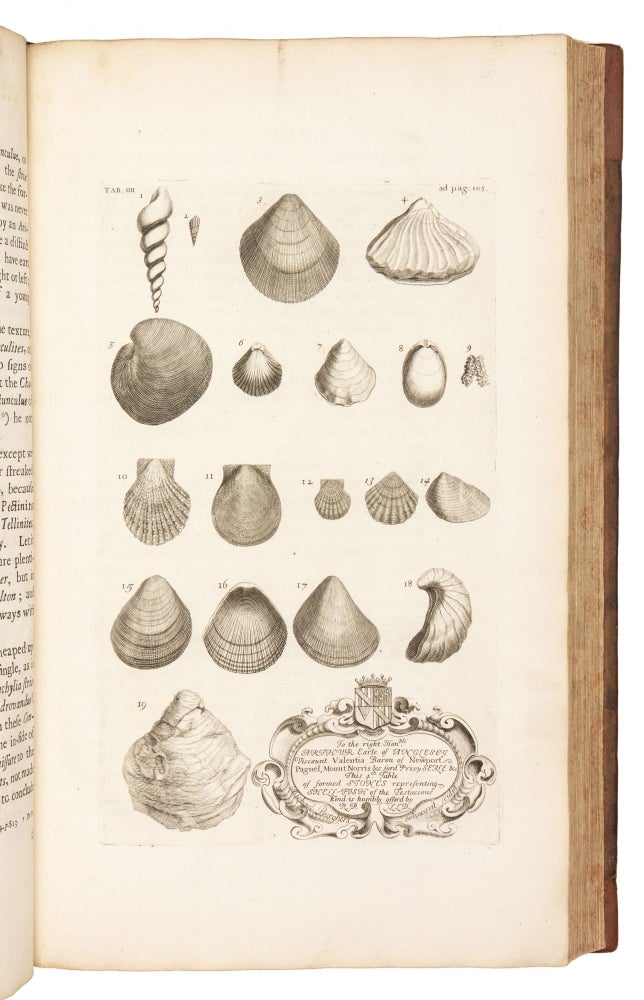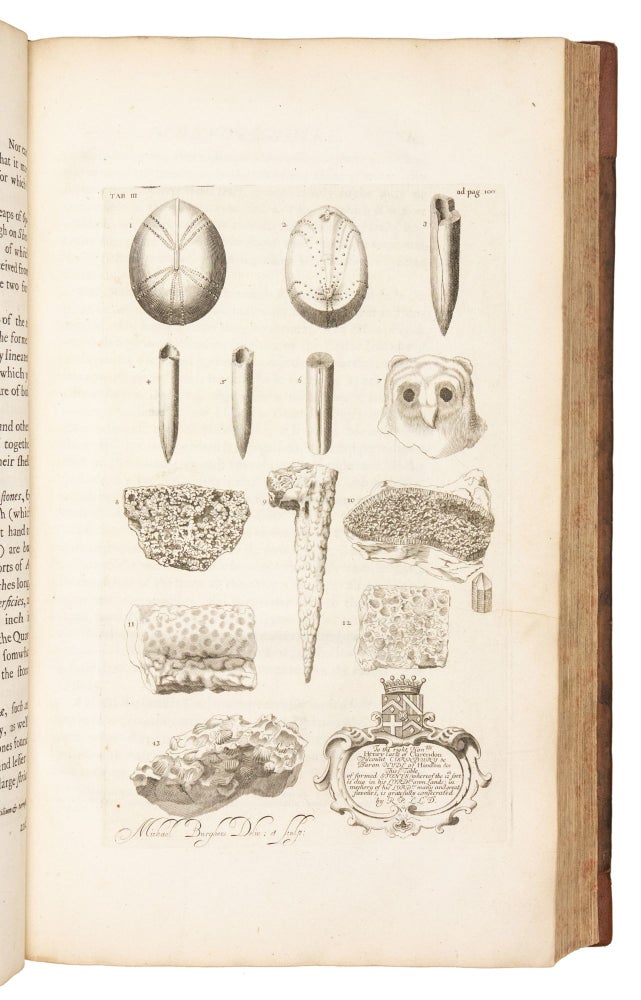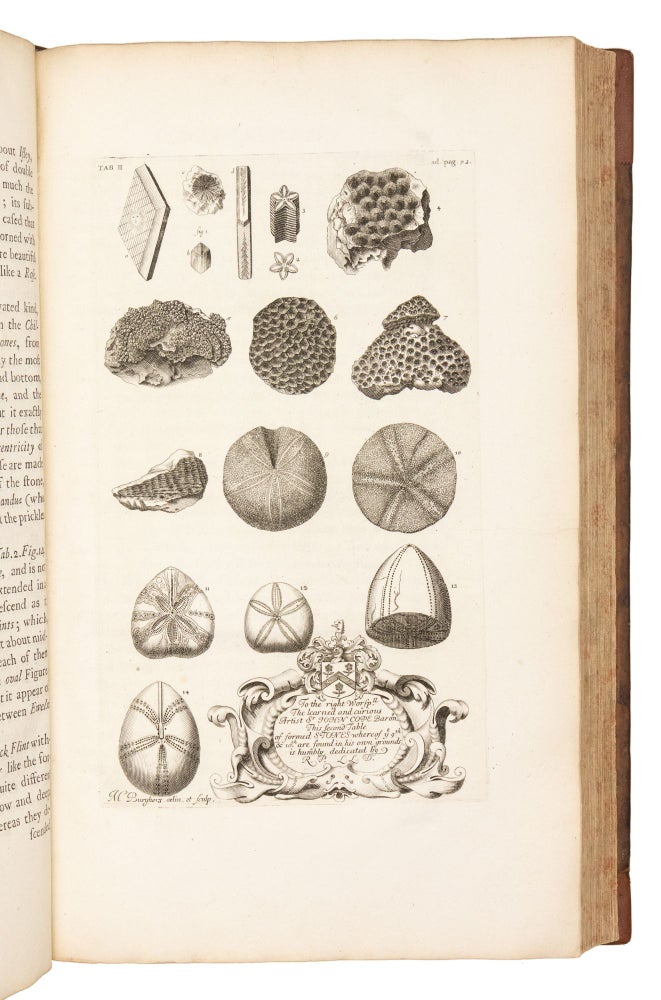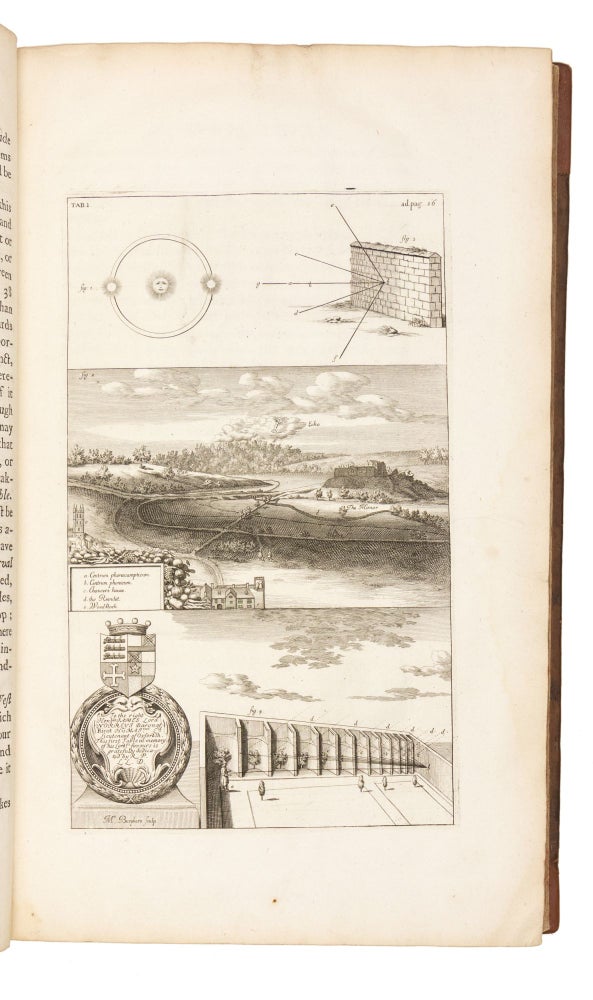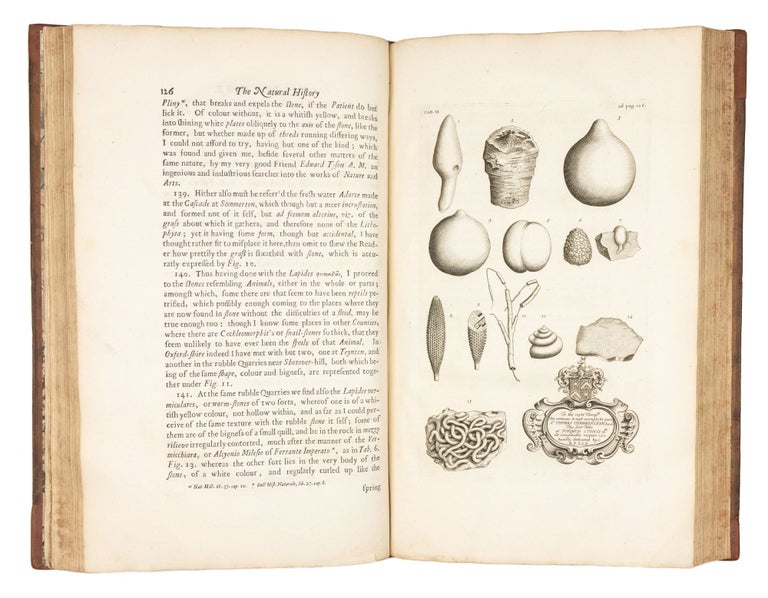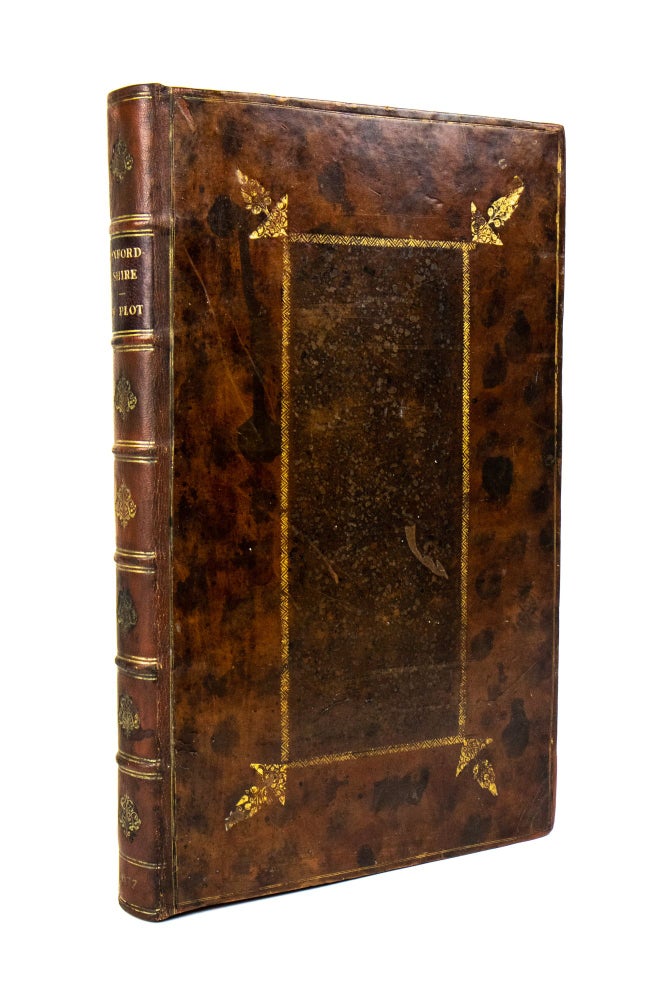The Natural History of Oxford-shire, Being an Essay toward the Natural History of England. By Robert Plot, LL.D.
Oxford: And are to be had there: And in London at Mr. S. Millers, at the Star near the West-end of St. Pauls Church-yard. 1677.
Price: $8,500.00
Folio: DIM Collation: [a]2, b4, A-Z4, Aa-Yy4, Zz2, Aaa-Bbb2 (Bbb2 blank and present.) With 16 added engraved plates and an engraved folding map of Oxfordshire.
FIRST EDITION.
An excellent, very tall copy on heavy paper. Bound in contemporary English paneled calf, (nicely rebacked and with repairs to the corners, some mild surface wear. The boards are framed by a double gilt rule, the central compartment with a roll-tooled border and ornate floral tools at the corners, gilt.
The text is illustrated with a large folding map of Oxfordshire and sixteen full-paged engravings of fossils, minerals, plants, the fascinating Enston waterworks, and other marvels and curiosities, by Michael Burghers. Trivial blemishes as follows: Light finger-soiling to lower corner of t.p., light stain in the gutter of first two leaves, clear dampstain to outer margin of leaf B4, gathering H, and first plate; small burn hole in margin of leaf L1, U4 small paper flaw in blank margin. Note on imprimatur leaf “Large paper copy.”
"Of all of the British naturalists of the late seventeenth-century, few represent the omnivorous curiosity of the Baconian tradition and its passion for collecting specimens and observations for their own sake so well as Robert Plot... In 1674 he drew up an itinerary patterned on those of earlier English antiquaries; but whereas they had been concerned with books and buildings to the exclusion of natural history and technology, Plot intended to tour England and Wales in search of ‘all curiosities both of art and nature such... as transcend the ordinary performances of the one and are out of the ordinary road of the other.’ He began with the county in which he was then living, starting work on his ‘Natural History of Oxfordshire’ in June 1674; by November 1675 he had a fine collection of minerals to exhibit to the Royal Society, and the book appeared in 1677. On the strength of the ‘Natural history’, Plot was appointed fellow of the Royal Society in 1677. He was secretary in 1682-1684 and thus joint editor of the Philosophical Transactions, most of which were printed at Oxford during his term of office; he was elected secretary in 1692. His success as a collector of rarities must also have helped when, in March 1683, the University of Oxford appointed him first keeper of the newly acquired Ashmolean Museum.
"Some seventy species of fossils are described. Here we have excellent descriptions and beautifully engraved drawings of these objects from the Jurassic and Cretaceous. Among them are many well-known forms…. He recognized the essential differences between those unrelated groups of bivalved shells, the brachiopods and the lamellibranchs". (Challinor p. 62).
This work also contains the first depiction of a dinosaur fossil. The fossil femur, identified by Plot as belonging to an elephant (and later as the femur of a giant), is now believed to have belonged to a Megalosaurus. The illustration is bound before page 143. The fossil had been discovered in 1676 in the Taynton Limestone Formation of the Stonesfield quarry. In the 19th c., Richard Owen used the Megalosaurus, along with the Iguanodon and Hylaeosaurus to define the dinosauria.
"Plot’s stress on the unusual and the anomalous, and his expectation that more can be learned from exceptions than from the general rule, apparently stemmed from his interpretation of the Baconian inheritance; this approach gives his natural histories a rather bizarre and curious flavor- his zoology tends to be teratology. He started with the heavens -curious meteorological phenomena observed in the country- then its airs (acoustic researches into sites famous for their echoes), waters—especially mineral and medicinal—and earths. The phenomena of erosion, which he called ‘deterration’, are discussed. He had some notion of stratigraphy, observing that ‘the Earth is here [Shotover Hill], as at most other places, I think I may say of a bulbous nature, several folds of diverse colour and consistencies still including one another.’
"Plot also made an extensive study of ‘formed stones’ or fossils, without appreciating that they could be used to identify strata. The controversy on the origins of fossils was then at its height. Plot argued, from the differences between fossil shells and any known specimens of the living shellfish they were thought to represent, that fossil shells were crystallizations of mineral salts; their zoomorphic appearance was as coincidental as the regular shapes of stalactites or snowflakes. Large quadruped fossils he considered the remains of giants, except for one identified as that of an elephant through comparison with an Elephant skull in the Ashmolean museum.
"One of [Plot’s] main objectives was to describe local crafts and farming techniques, in the hope of diffusing successful practices or new inventions throughout the country. Thus technological information is scattered through both his works on natural history, providing useful evidence on contemporary agriculture, mines, and such industries as the Staffordshire potteries." (DSB).
ESTC R7620; Wing P2586; Madan, 3130; Gibson 536



